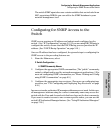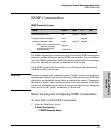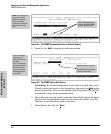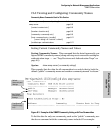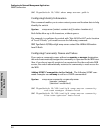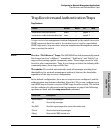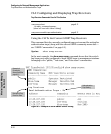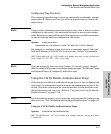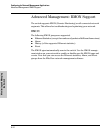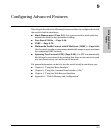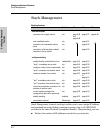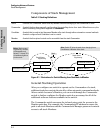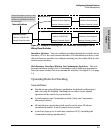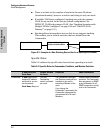
8-11
Configuring for Network Management Applications
Trap Receivers and Authentication Traps
Monitoring and Managing
the Switch
Configuring Trap Receivers
This command specifies trap receivers by community membership, manage-
ment station IP address, and the type of Event Log messages to send to the
trap receiver.
Note If you specify a community name that does not exist—that is, has not yet been
configured on the switch—the switch still accepts the trap receiver assign-
ment. However, no traps will be sent to that trap receiver until the community
to which it belongs has been configured on the switch.
Syntax: snmp-server host
<community-str> <ip-address> [<none | all | non-info | critical | debug>]
For example, to configure a trap receiver in a community named “red-team”
with an IP address of 10.28.227.130 to receive only “critical” log messages:
SMC TigerSwitch 10/100(config)# snmp-server trap-receiver
red-team 10.28.227.130 critical
Note If you do not specify the event level ([<none | all | non-info | critical | debug>])
then the switch will not send event log messages as traps. “Well-Known” traps
and threshold traps (if configured) will still be sent.
Using the CLI To Enable Authentication Traps
If this feature is enabled, an authentication trap is sent to the configured trap
receiver(s) if a management station attempts an unauthorized access of the
switch. Check the event log in the console interface to help determine why
the authentication trap was sent. (Refer to “Using the Event Log To Identify
Problem Sources” on page 11-10.)
Note For this feature to operate, one or more trap receivers must be configured on
the switch. See “CLI: Configuring and Displaying Trap Receivers” on page 8-10.
Using the CLI To Enable Authentication Traps.
Syntax: snmp-server trap authentication
SMC TigerSwitch 10/100(config)# snmp-server trap authen-
tication



